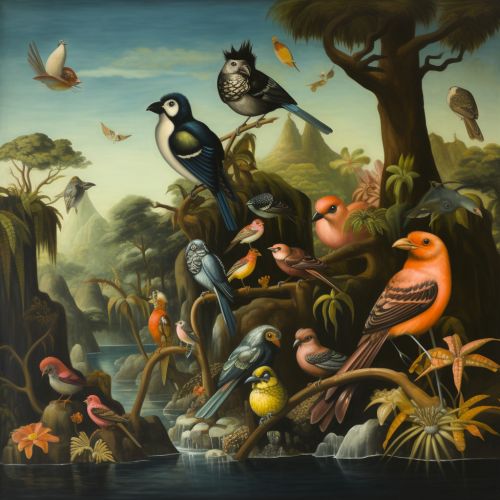Chordate
Introduction
The chordates are a large and diverse group of animals, characterized by the presence of a notochord, a dorsal hollow nerve cord, pharyngeal slits, and a post-anal tail at some stage in their life cycle. This phylum includes some of the most familiar animals, such as the mammals, birds, reptiles, amphibians, and fishes.


Characteristics
Chordates are defined by having at some stage in their life cycle a notochord, a dorsal hollow nerve cord, pharyngeal slits, and a post-anal tail. These characteristics are most evident in the embryonic stage, but some are retained in adulthood in certain species.
Notochord
The notochord is a flexible, rod-shaped structure that is found in the embryonic stage of all chordates. It extends the length of the body, providing support and aiding in locomotion. In many chordates, the notochord is replaced by the vertebral column (spine) during development.
Dorsal Hollow Nerve Cord
The dorsal hollow nerve cord is a tube-like structure located above the notochord. This nerve cord is unique to chordates and is different from the solid, ventral nerve cord found in invertebrates. In vertebrates, the dorsal hollow nerve cord develops into the brain and spinal cord.
Pharyngeal Slits
Pharyngeal slits are openings that connect the inside of the throat to the outside of the "neck". These are used for filter feeding in primitive chordates, while in most vertebrates they develop into gills or are modified for other functions.
Post-anal Tail
The post-anal tail is an extension of the body that runs past the anal opening. This tail contains muscle tissue and is used for locomotion in aquatic species. In many terrestrial vertebrates, the tail is used for balance or communication.
Classification
Chordates are divided into three subphyla: Urochordata (tunicates), Cephalochordata (lancelets), and Vertebrata (vertebrates). The latter includes the majority of species and is further divided into several classes, including mammals, birds, reptiles, amphibians, and fishes.
Urochordata
Urochordates, also known as tunicates, are marine animals that exhibit the characteristic features of chordates only in their larval stage. Adult tunicates are sessile and have a tough, protective tunic covering their body.
Cephalochordata
Cephalochordates, or lancelets, are small, fish-like marine animals that retain all four chordate features throughout their life. They have a notochord that extends into the head, which is a characteristic unique to this group.
Vertebrata
Vertebrates are the most diverse and familiar group of chordates. They are characterized by a segmented vertebral column that replaces the notochord during development. This group includes mammals, birds, reptiles, amphibians, and fishes.
Evolution
The origin and early evolution of chordates is a subject of ongoing research. It is believed that chordates evolved from a group of deuterostome invertebrates more than 500 million years ago during the Cambrian period. The earliest known chordate fossil, Pikaia, dates from this time.
